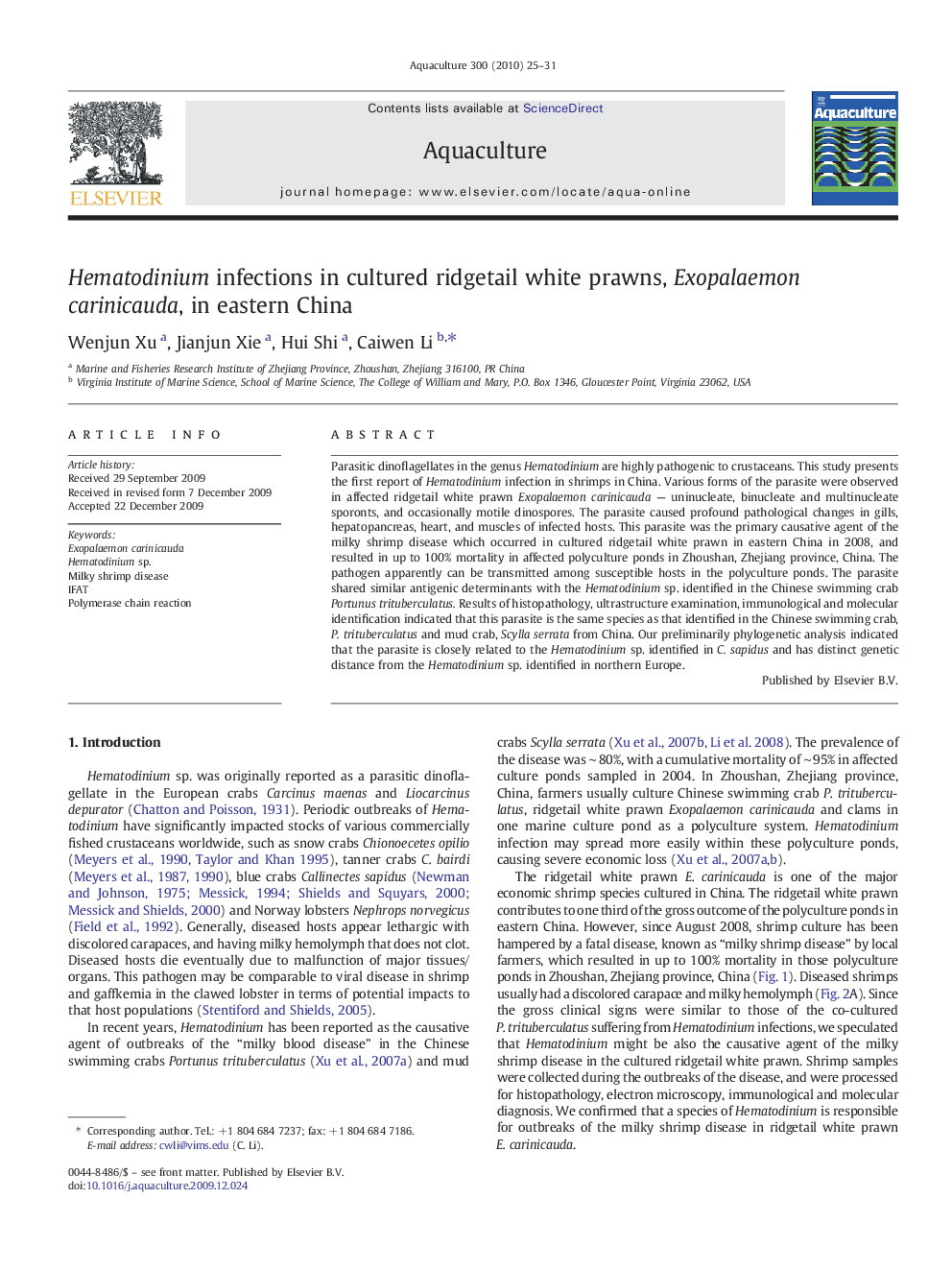| Article ID | Journal | Published Year | Pages | File Type |
|---|---|---|---|---|
| 2423727 | Aquaculture | 2010 | 7 Pages |
Parasitic dinoflagellates in the genus Hematodinium are highly pathogenic to crustaceans. This study presents the first report of Hematodinium infection in shrimps in China. Various forms of the parasite were observed in affected ridgetail white prawn Exopalaemon carinicauda — uninucleate, binucleate and multinucleate sporonts, and occasionally motile dinospores. The parasite caused profound pathological changes in gills, hepatopancreas, heart, and muscles of infected hosts. This parasite was the primary causative agent of the milky shrimp disease which occurred in cultured ridgetail white prawn in eastern China in 2008, and resulted in up to 100% mortality in affected polyculture ponds in Zhoushan, Zhejiang province, China. The pathogen apparently can be transmitted among susceptible hosts in the polyculture ponds. The parasite shared similar antigenic determinants with the Hematodinium sp. identified in the Chinese swimming crab Portunustrituberculatus. Results of histopathology, ultrastructure examination, immunological and molecular identification indicated that this parasite is the same species as that identified in the Chinese swimming crab, P.trituberculatus and mud crab, Scylla serrata from China. Our preliminarily phylogenetic analysis indicated that the parasite is closely related to the Hematodinium sp. identified in C. sapidus and has distinct genetic distance from the Hematodinium sp. identified in northern Europe.
